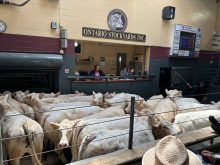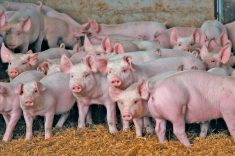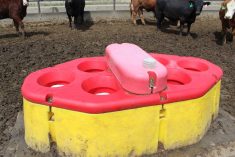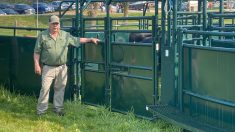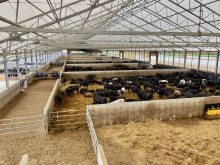Replacing heifers based on visual phenotype and genetic merit rather than early screening leaves potential long-term herd retention on the table.
That’s according to Jordan Thomas, an assistant professor with the University of Missouri’s division of animal sciences. He challenged Beef Day attendees at Grey Bruce Farmers’ Week to approach heifer replacement as if they were hiring new employees to balance workforce retirements.
Why it matters: Reframing heifer retention as screening potential employees could naturally improve long-term herd and economic sustainability by weeding out low-performing cows within their first calving.
Read Also
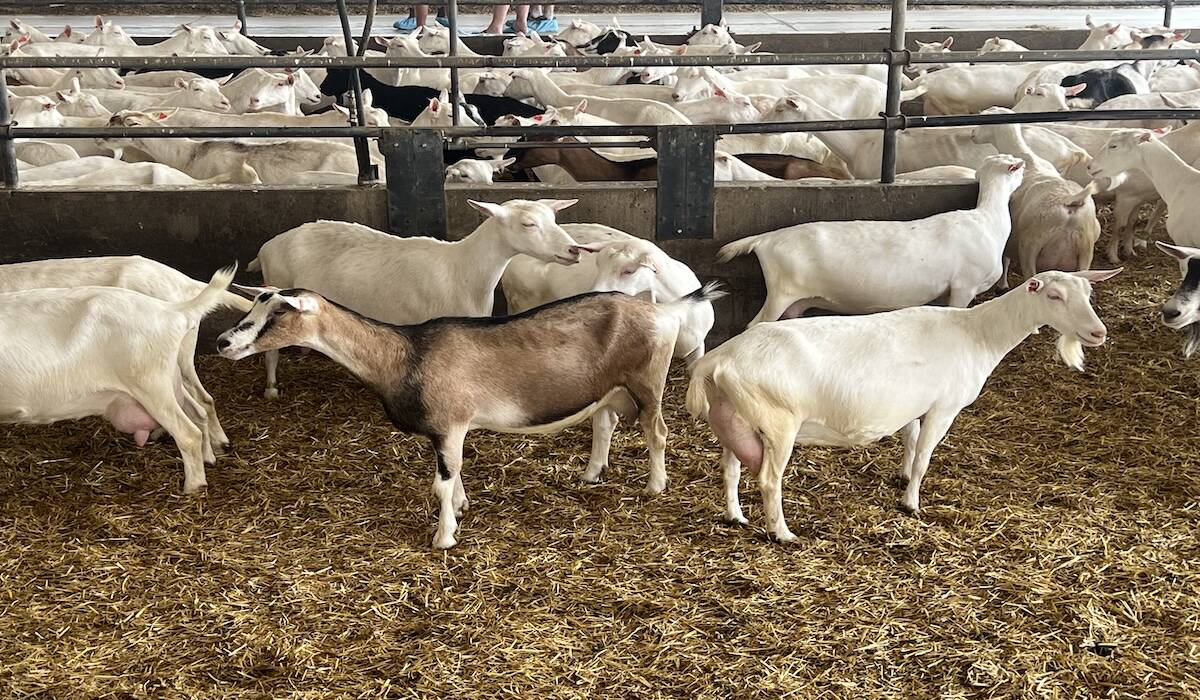
Ontario dairy goat producers move toward forming provincial board
Creation of a Dairy Goat Board under the Ontario Farm Products Marketing Commission may be voted on by early 2026.
“What would it take to hire a replacement heifer into a commercial cow-calf operation?” he posed. Current costs are between US$390 to US$450 per calf according to the fall and spring calving rates in the United States, falling behind feed as the highest production expense.
Unlike most selection processes, genetic merit and visual phenotype are the final boxes Thomas checks. Instead, a calf must meet the minimum requirements of being structurally sound, in good health, have an easy disposition, and be an early conceiver with a low likelihood of calving difficulty.
“There’s some opportunity at birth to think about replacement heifer selection. I’m going to try to convince you today that, just like she can’t be BVD PI (Bovine Viral Diarrhea PIs), she can’t be a late-conceiving heifer,” Thomas said. “I’m going to draw a hard line on that.”
Thomas said studies show that late-conceiving heifers exit the herd faster, increasing annual replacement costs. Early-conceiving animals generally produce higher weaning weights in subsequent years and reduce yearly cow replacement costs.
Seventy per cent of heifers born within the first 21 days of their calving season will cycle before their first breeding season, with 81 per cent calving within the first 21 days themselves. In contrast, cycling before their first breeding season drops to 58 per cent for calves born in the second 21 days of calving season, with only 69 per cent of those calving early. For those born in the third 21-day calving season, early breeding season cycling drops to 39 per cent and early calving to 65 per cent.
“Some of it’s because (early born heifers) are bigger and have more weight; they’re better developed. Because puberty is associated with age, the earlier-born heifer tends to conceive a little bit earlier and stay in the herd a little bit longer,” Thomas explained. “If you’re really limited on the number of heifers you can develop, it’s not a bad idea to emphasize keeping back the earliest born heifers.”
A 2018 study on target weights for heifers, traditionally set at 65 per cent of mature weight, said U.S. cow size had increased 32 per cent since 1978 and that forage-based heifers bred at 55 per cent became profitable at three to four years old.
While this could lower conception rates by two per cent, it’s negligible considering feed savings and calf revenue —a development cost-reduction opportunity of US$574 to US$644 per heifer compared to dry lot animals raised to 65 per cent target weight.
Reproductive track scoring (RTS) performed 30 to 60 days before breeding could narrow heifer selection through pelvic measurement and puberty assessment of one, indicating an infantile pre-pubertal tract, to five for a cycling heifer.
The Show-Me-Select heifer replacement database of 44,500 heifers indicates high pregnancy rates for animals with four or five scores, improving fixed-time artificial insemination success and weaning weight.
“A great component of that pre-breeding exam would be pelvic measurement,” he said. “This is a tool to potentially minimize the incidence of dystocia.”
A Rice Pelvimeter measures the pelvis’s vertical and horizontal dimensions for a total pelvic area as a calving ease indicator in combination with calve ease bull breeding, as both impact dystocia potential.
For example, a height of 13.5 cm by a width of 11.5 cm is a pelvic measurement of 155.25 cm2, slightly exceeding the 150 cm2 Thomas suggests as the minimum heifers should meet to remain in the herd.
Yearling pelvic growth is approximately eight to 10 cm2 per month or 0.25 to 0.30 cm2 a day, so those failing the initial exam can be remeasured during pregnancy diagnosis for accuracy, especially for later-born heifers.
A heifer with a super-large pelvis can experience dystocia with a 95-pound calf and no issue with a 55-pound calf, whereas a heifer with a small pelvis would.
“If you’re going to solve the dystocia problem in heifers, you can’t just do one thing,” he said. “It’s not going to manage the problem entirely to just use calving ease bulls; we have to do some management of the females.”
Screening out females with an unacceptably small pelvis area is an effective tool for early replacement heifer elimination.
Thomas said there are many methods of integrating genetics and phenotypes for fertility and productivity into replacement animal selection.
Each producer has a system for who stays in the herd; some put bulls in 21 days earlier to see which heifers conceive, which works from a business perspective rather than a genetic selection one. Others use a veterinarian to assess who conceived early and sell those who don’t, and others develop almost every heifer.
“Everybody’s operation is a little bit different, right? You might have a comparative advantage of grass access and low-cost feed resource access, right?” Thomas said. “Some people’s comparative advantage is they’ve got a dry lot and cheap feed resources, and the economics may incline you to heavier development endpoints in that model.”







